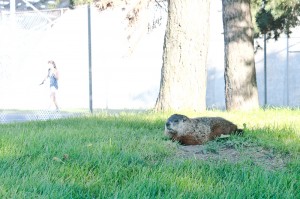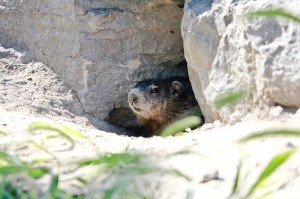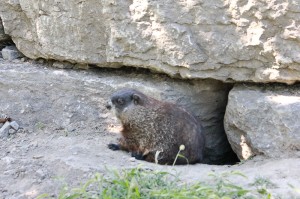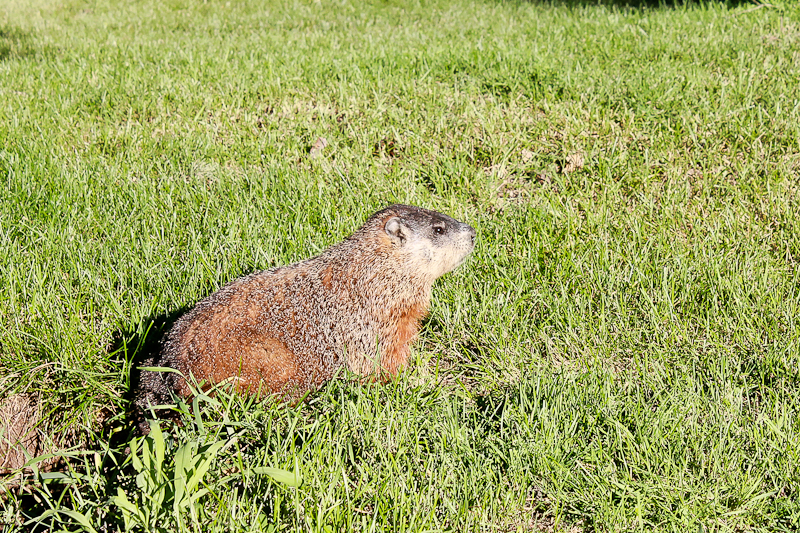Carleton’s campus is home to students, academics, and numerous professionals. It is also home to an unappreciated but visible population—groundhogs.
The large, tubby rodents can be seen munching away on Carleton’s lawns or sprinting pell-mell for their burrows whenever students get too close.
Lately, they’ve been creating “quite a mess” at the Graduate Students’ Association’s community garden, garden co-ordinator Chris Bisson said.
They haven’t breached the raised beds, he said, which are two feet tall and made of wood, but they have gone after plants in the ground such as marigolds, beans, carrots, and leafy greens.
“A few of the gardeners have decided to wrap chicken wire fencing around their peas or their beans, because the groundhogs have been nipping at it,” Bisson said.


 He said when the garden was being planned they considered burying a fence into the ground to deter the groundhogs, but decided against it.
He said when the garden was being planned they considered burying a fence into the ground to deter the groundhogs, but decided against it.
“All the fencers I talked to said . . . they’d be able to dig right under it,” he said. “They can get down three or four feet by just burrowing.”
Library researcher Francis Montgomery, who first started working on campus in 1973, also said she remembers the darker side of the groundhogs’ presence.
She worked at the community garden in the early ‘80s, which was then located near where the Nesbitt Biology Building is located today.
“They were certainly active in eating everything,” she said, adding that she found it “very dispiriting.”
Biology professor Michael Runtz offers three reasons why groundhogs may be enjoying their stay on campus.
First, Carleton has a lot of good feeding ground. Carleton’s wide, open lawns offer plenty of vegetation to eat, Runtz said.
They also give groundhogs a good line of sight on anything that might try to harm them, he said.
“They live in a habitat where they can see any danger to themselves,” he said.
The second is that there are very few predators on campus.
Foxes and coyotes are spotted easily by the groundhogs, who can easily evade capture by hiding in their burrows.
“Groundhogs can also climb trees to some extent,” Runtz said, so the rodents can escape predators even if caught away from their subterranean homes.
The third reason is that they haven’t been exploited as a food source by hungry students.
“Even the hungry students don’t eat them,” Runtz said.
Library archivist Patti Harper said she remembers seeing them when she began working at Carleton in 1994.
People often make a special effort to feed the groundhogs, she said. People would feed fruit to a certain groundhog that would raise a litter in the quad every year.
“I have literally seen someone bring two Tupperware containers of fruit, one for their lunch and one for the big groundhog,” she said.
The groundhogs aren’t shy about asking for food either, Harper said.
“They’ll pop up right beside you, and they look at you like ‘are you sharing your lunch with me today?’”






